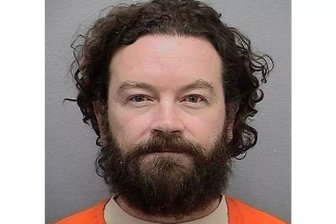PARIS – After decades of warnings from scientists that greenhouse gas emissions were warming the planet, governments started coming together in the 1980s to combat the problem. Here’s a timeline of key moments in the diplomatic effort to stop global warming, leading up to the U.N. climate conference in Paris:

1987: MONTREAL – Governments adopt a treaty pledging to restrict emissions of chemicals damaging the ozone layer. While it doesn’t deal with climate change specifically, the Montreal Protocol becomes a model for how to rein in man-made emissions through international agreements.
1988: NEW YORK – The U.N. General Assembly endorses the creation of the Intergovernmental Panel on Climate Change. It is set up the same year by two U.N. agencies, the World Meteorological Organization and the U.N. Environmental Program, to assess the existing knowledge about climate change.
READ MORE: Trudeau speaks of Canada’s desire to tackle climate change
1990: LONDON – The IPCC releases its first scientific assessment of climate change. It says greenhouse gas levels in the atmosphere are increasing due to human activity, resulting in warming of the Earth’s surface.
WATCH: World leaders meet in Paris to develop climate strategy. Tom Clark reports
1992: RIO DE JANEIRO – World leaders gathering for the first Earth Summit sign the United Nations Framework Convention on Climate Change, the first international treaty aimed at limiting greenhouse gas emissions. However, it sets no binding emissions targets.

Get daily National news
1997: KYOTO, Japan – The Kyoto Protocol is adopted, setting binding emissions targets for wealthy countries. The United States doesn’t join the treaty because it doesn’t include big developing countries such as China and India. The U.S. also says the treaty would harm its economy.
2004: MOSCOW – President Vladimir Putin signs a bill confirming Russia’s ratification of the Kyoto Protocol. The move means countries representing more than 55 per cent of global emissions support the treaty, a condition for it to take effect.
READ MORE: Trudeau mum on climate plan timeline
2007: OSLO, Norway – Former U.S. vice-president and climate campaigner Al Gore and the IPCC share the Nobel Peace Prize for their efforts to raise awareness about global warming.
2009: COPENHAGEN, Denmark – The first attempt to craft a global emissions treaty to replace Kyoto, which is set to expire in 2012, falls apart amid disputes between rich and poor countries over who should do what. Acrimonious negotiations end with a voluntary deal inviting countries to present nonbinding emissions targets for 2020.
2011: DURBAN, South Africa – U.N. climate talks produce a major breakthrough as countries agree to adopt a universal agreement on climate change in 2015 that would take effect five years later and apply to all of them.
WATCH: Justin Trudeau tells world leaders at Paris climate change conference that ‘Canada is back’
2013: STOCKHOLM – The IPCC says it’s “extremely likely” that human influence is the dominant reason for warming temperatures recorded since the mid-20th century.
2015: PARIS – More than 190 governments meet in the French capital to finish what’s envisioned as a landmark deal to rein in greenhouse gas emissions after 2020.






Comments